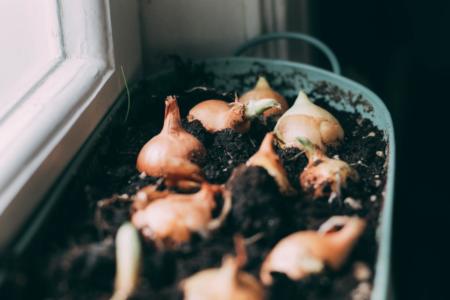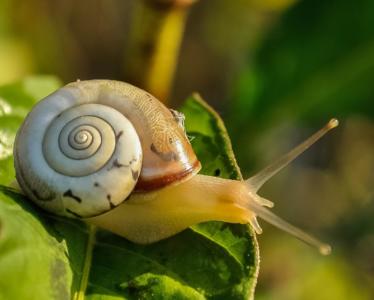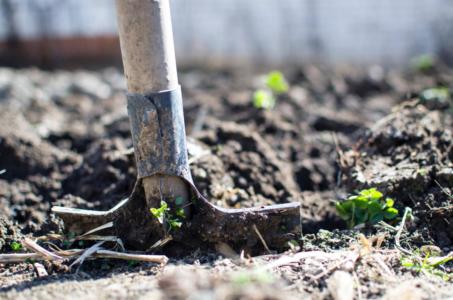Each month we bring you the latest gardening news from our green-fingered experts in York

On your marks. Get Set. Grow!
By Tony Chalcraft
Onions are one of the easiest vegetable crops to grow, especially if you plant them from ‘sets’. For any novice growers out there, ‘sets’ are dried baby onions grown the previous year and sold the following spring ready for planting.
A number of different types of onion sets are available. They’re often sold in packs of 50 but it’s also possible to buy them loose by weight, which usually gives better value. The variety I mainly use is Sturon, a tried and tested favourite that gives a good sized bulb that stores well. I sometimes also grow the unimaginatively named Setton as well as one called Centurion. An old-favourite with many is Stuttgarter, which produces a flat-topped bulb. For red onions Red Baron is the best, although Karmen has also done well for me.
Set down

Once you’ve got some sets, don’t be in too much of a hurry to plant. Like many vegetables onions are biennial, flowering and setting seed in the second year of growth. It’s winter cold that induces seeding. To prevent sets sending up a flower head, instead of producing a bulb after planting, they’ll have been dried and stored away from cold winter weather. If you plant too early there’s a risk you’ll confuse the sets, exposing them to enough chill to mimic the effect of winter. The result will be lots of ‘bolters’, that is plants with impressive upright flower stalks but puny bulbs.
I usually begin planting onion sets in the last week of March, but only if the weather is warmish and a cold spell isn’t forecast. I don’t plant all the sets at once, instead planting in batches up until mid-April. This reduces the risk of all the sets being affected by a cold snap. The red onions are always the last to be planted. These seem more prone to bolting than the standard types so it’s particularly important not to have them in the ground during unseasonal weather.
Get your hands dirty
Planting onion sets is easy providing the soil isn’t wet and sticky. It’s often advised sets are pushed into the soil (make sure you get them all the right way up, blunt end downwards!) but on firm ground this might compact the soil beneath the set and inhibit rooting. I prefer to make a shallow drill (small groove in the soil) using a hoe or corner of the rake head. I then drop the onions in, spacing them 10-15cm apart. Drills or lines are set at 30cm spacing. Once in, the drill soil is drawn back around each set by hand – so they’re either just buried or only the tip of the neck peeps above the surface.
Once you’ve got the sets in it’s worth checking after a few days that they haven’t been disturbed. Sometimes birds will tug the newly-planted sets out of the soil strewing then across the surface. If this is a problem, plant a little deeper so that the tip isn’t visible; or temporarily use a net as a deterrent. It usually takes two to three weeks for the sets to sprout green shoots. After this, apart from occasional weeding, you should be all set for an onion harvest in late summer.

Gardening Q&A with Chris from Brown Nurseries
This question is one that often gets asked about every year: can you recommend some slug-proof perennials please?
Slugs and snails undoubtedly have a voracious appetite when they discover a tasty plant. But what they devour in one garden they often nibble at in another. Some plants, such as many hostas, are always a gourmet meal for slugs and snails, and are readily consumed. Others, especially those with hard-textured, hairy, or poisonous leaves, are often relatively ignored. Here’s a selection of the most reliably slug- and snail-proof perennials for the garden.
Alliums, or ‘Ornamental Onions’, are magnificent for group plantings. These bulbs have arching, strap-shaped leaves, and differently sized round heads in various colours of spangled flowers in summer. These are loved by bees and butterflies.
Asters, or ‘Michaelmas Daisies’, form bushy clumps of leafy, slender-branched stems, which are topped by broad heads of blue, pink or white yellow-eyed daisies in late summer and autumn.
Bergenia, or ‘Elephants Ears’, have fleshy evergreen leaves and form a basal mound – above which, in spring, rise erect and fleshy stems bearing loose clusters of pink or white flowers.

Geranium macrorrhizum, or ‘Cranesbill’, are adaptable and reliable semi-evergreens with lobed, aromatic leaves often flowering well into autumn. Clusters of pink to purple flowers appear in early summer.
Helleborus niger, or ‘Christmas Rose’, are clusters of saucer-shaped white- or pink-tinted flowers, which open from winter to spring above the basal clump of divided, course-toothed evergreen leaves.
Sedum ‘Herbstfreude’ ice plants are reliable and easy to grow, with mounds of grey-green leaves and fleshy stems topped by flattened heads of pink flowers. They pop up from summer to autumn and are loved by butterflies.
I have a shady area at the back of my garden, and I’d like to plant some ferns here. Please could you give me some advice about non-flowering perennials?
Ferns are easily the most garden-worthy, offering an exciting variety of shapes and heights for use as specimen plants, or in bold groupings. Most of the following ferns are of medium to large size, and will thrive given humus-rich soil, moisture, and shade.
For a large structural fern you could use ‘Dicksonia Antarctica’. Tree ferns are slow-growing architectural plants with spreading fronds above a thick trunk. They make striking plants.
Dryopteris wallichiana wood ferns have erect fronds, which form a big, semi-evergreen shuttlecock and have dark scaly stalks. Its fronds grow taller if rich soil and shelter are provided.
‘Polystichum’ sword ferns can transform an otherwise dull corner or border once it’s established. Its laddered evergreen fronds will form a large, handsome clump.
Dryopteris erythrosora, or ‘Japanese Red Shield Ferns’, are some of the most colourful of hardy ferns. Their coppery-red young fronds in spring and summer contrast with the dark green, overwintering, mature fronds.
Athyrium niponicum, or ‘Red Beauty’, is a relative of the Japanese Painted Fern. It has a broad habit attractive, arching and triangular fronds of silvery-green, with bright contrasting stems and veins of burgundy-red. This fern is also deciduous, losing its foliage in the winter.
Asplenium scolopendrium crispum, or ‘Hart’s Tongue Fern’, is a curiously attractive evergreen fern with strap-shaped, wavy-margined shiny fronds – that gradually form a bold clump. They’re also ideal for the front of a shady border.
I’d like to thank all my doctors and nurses at Hull Royal Infirmary, York District Hospital and White Cross Court for all the care they gave me through my recent illness. For my family and very close friends, your love was amazing. And all the get well cards – wow.
Thank you,
Chris x

Spring into action
Spring is almost upon us. And there’s no better time to get out into the garden – to enjoy the fresh air and sneak in some gentle exercise – by starting to plan, and plant, some colourful displays to enjoy over the forthcoming months.
For an instant burst of colour, choose plants that are at their best through spring – such as golden daffodils, tulips (which are available in an array of colours), and hyacinths to add some fragrance. Why not team them up with seasonal bedding like violas, pansies and primulas – all perfect for planting in patio pots, window boxes and flower beds.

These gardening activities of potting, watering and planting not only bring the reward of a beautiful spring display, but also you’ll be satisfying your creative needs and reaching a sense of achievement that you’ve created something enjoyable, which can have a great effect on our mental health and wellbeing.
Not only is gardening a benefit to our mental health, it’s also excellent exercise too. If you’re planting or weeding, you’re also stretching and bending; which can keep you fit and flexible. If you want a more active task whilst gardening, then digging, raking, sweeping and mowing the lawn can raise your heart rate and burn off calories too. According to statistics, just one hour of active gardening can burn off around 250-500 calories. Who needs to pay astronomical gym fees when you can get fit in your own garden?!
Another task that can be done this spring is to plant up evergreen flowering shrubs such as camellia, holly and hebe, which can add colour and structure to your borders. Before planting, remember to prepare the soil thoroughly and enjoy the movement of digging, while adding organic compost to improve drainage and the composition of your soil and will help your plants flourish.
So, spring into action and get your body and garden into shape for the year ahead.











Add a comment